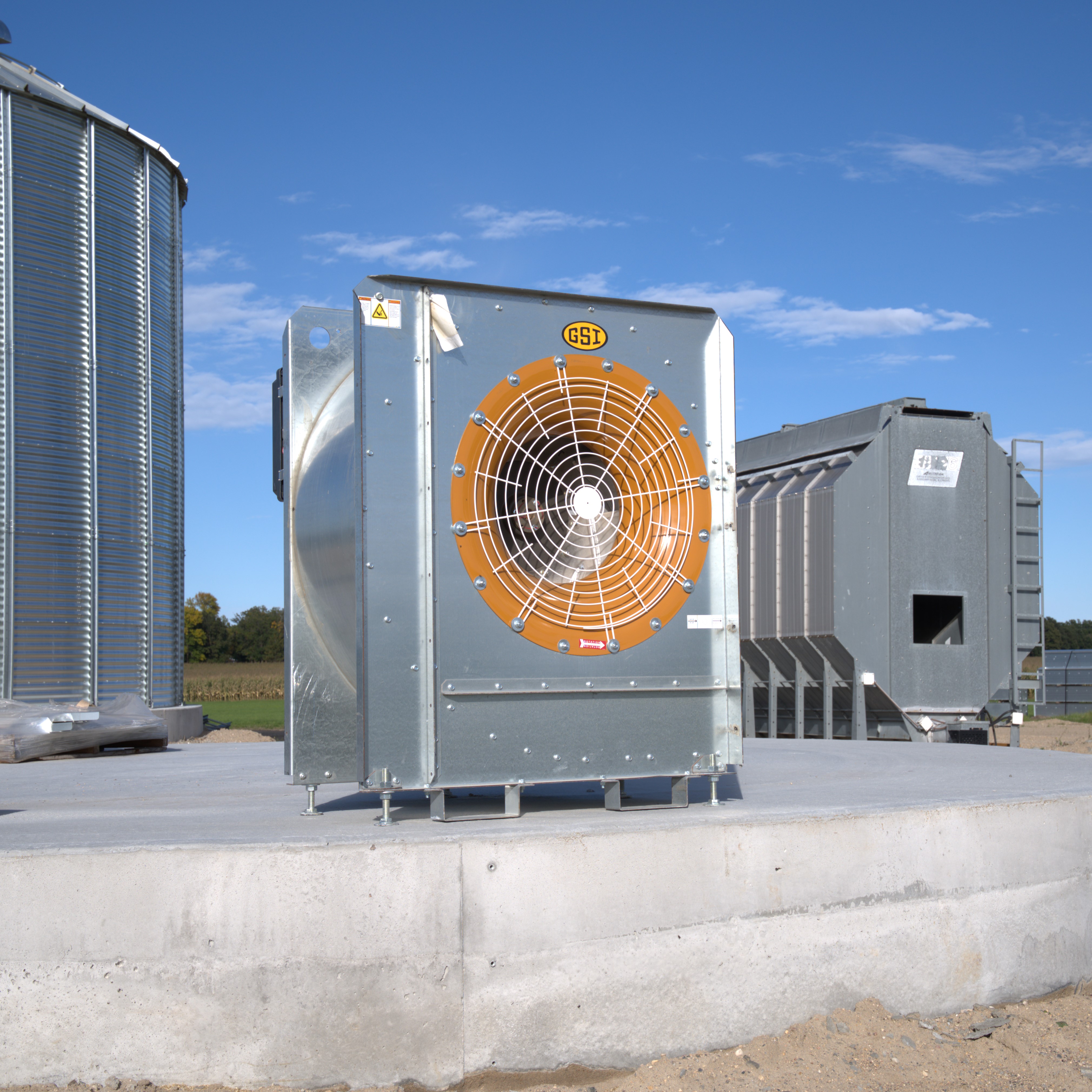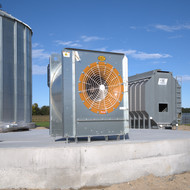Natural Air Grain Drying: A Comprehensive Guide
Published by The Grain Handling Direct Team on May 5th 2023

Drying grain is a process that has been used by farmers for centuries. The objective of drying is to safely store grain for future use while minimizing losses due to spoilage. There are many ways to dry grain, and the method used will depend on the type of grain, the climate, and the availability of equipment.
Natural air drying is a common method of grain drying, and it can be done with or without the use of supplemental heat. Solar drying is a type of natural air drying that uses the sun’s energy to remove moisture from grain. Solar drying is a low-cost, energy-efficient way to dry grain, but it can be slow and it requires good weather conditions.
If you are a farmer who is interested in drying grain, then you should learn about natural air grain drying. This article will introduce you to the basics of natural air drying and its advantages and disadvantages.
What is natural air grain drying?
Natural air grain drying is a process whereby grain is dried by allowing air to pass through and around it. This is done either with an agricultural drying system or by simply exposing the grain to wind, sunlight, and ambient air. In a drying system, the grain is placed in an aerated container and the temperature and airflow are managed to make sure that the grain is dried properly.
The drying process works by passing air over the grain, which draws out the moisture. The temperature of the air is controlled to maintain a safe drying rate. The air must be humid enough to draw out the moisture from the grain, but not cause condensation to form on the grain itself. Additionally, the air must maintain a temperature that is low enough that the grain does not dry out or burn, and high enough that evaporation will occur.
Natural air grain drying is an effective, economical way to dry grain, as long as the air temperature, humidity, and airflow are managed so that the grain is dried safely and efficiently.
The benefits of natural air grain drying
Natural air grain drying is an economical, sustainable and safe way to dry grain. The benefits of this method of drying grain include:
1. Higher quality. Natural air grain drying preserves grain quality differently than other methods of drying grain, including by maintaining the grain's flavor, aroma, color and texture. This can be beneficial for the human and industrial uses of grain, as the quality will be higher and more consistent.
2. Cost savings. Natural air grain drying can be done without additional inputs or energy use, reducing the cost of grain drying. This can give farmers an edge in their market.
3. Low maintenance. Natural air grain drying only requires occasional maintenance and care, reducing the labor required to maintain the system.
4. Carbon footprint reduction. Natural air grain drying can reduce the carbon footprint of grain harvesting and drying, which can mean a lower environmental impact.
By utilizing this method of grain drying, farmers can benefit from higher quality grain and cost savings, as well as a reduction in their overall carbon emissions. Natural air grain drying is an economical, sustainable and safe way to dry grain.
The challenges of natural air grain drying
Despite the many benefits of natural air grain drying, there are some challenges associated with this method that should be noted.
1. Weather dependency. Natural air grain drying is heavily reliant on the weather, leading to less than optimal yields on rainy days. This means that farmers must be vigilant in understanding and managing the weather to ensure their success.
2. Lower capacity. Natural air grain drying has a lower capacity compared to other methods, making it more suited for small scale operations or those with intermittent needs.
3. Contamination risk. There is a higher risk of contamination with natural air grain drying due to the presence of dirt, dust, and insects in the air.
4. Security risk. Drying equipment must be securely stored when not in use to prevent theft.
5. Labour intensive. Farming operations using natural air grain drying require more labor due to the setup and maintenance requirements.
Despite these challenges, natural air grain drying is still a viable and cost effective method for drying grain. By understanding the challenges and mitigating the risks, farmers can effectively use natural air grain drying for their operations.
How to set up a natural air grain drying system
Setting up a natural air grain drying system requires careful planning to ensure success. Here are the steps for setting up and maintaining a natural air grain drying system:
1. Select the right location: Choose a well-ventilated, open area that is away from any sources of dust, dirt, or other contaminants. This will help prevent contamination of the grain.
2. Install the equipment: Install the necessary equipment, such as the grain dryer, fans, and transitions. Ensure that all equipment is securely fastened and fixed to prevent any issues.
3. Establish temperature control: Establish a temperature control system to control the heat and humidity. This will help ensure a consistent drying process. Consider a automated temperature control system such as GrainVue to assist you.
4. Configure air flow: Configure the air flow correctly to ensure that the air is evenly distributed and that moisture levels are kept in check throughout the drying process.
5. Monitor performance: Monitor the performance of the system regularly to ensure that it is running as efficiently as possible and to identify and address any problems that may arise.
By following these steps, farmers can set up and maintain a natural air grain drying system that is both efficient and effective.
Conclusion
As we have seen, setting up a natural air grain drying system is a simple and effective process. With the right planning and maintenance, natural air grain drying can be a sustainable and cost-efficient way of drying grains.

